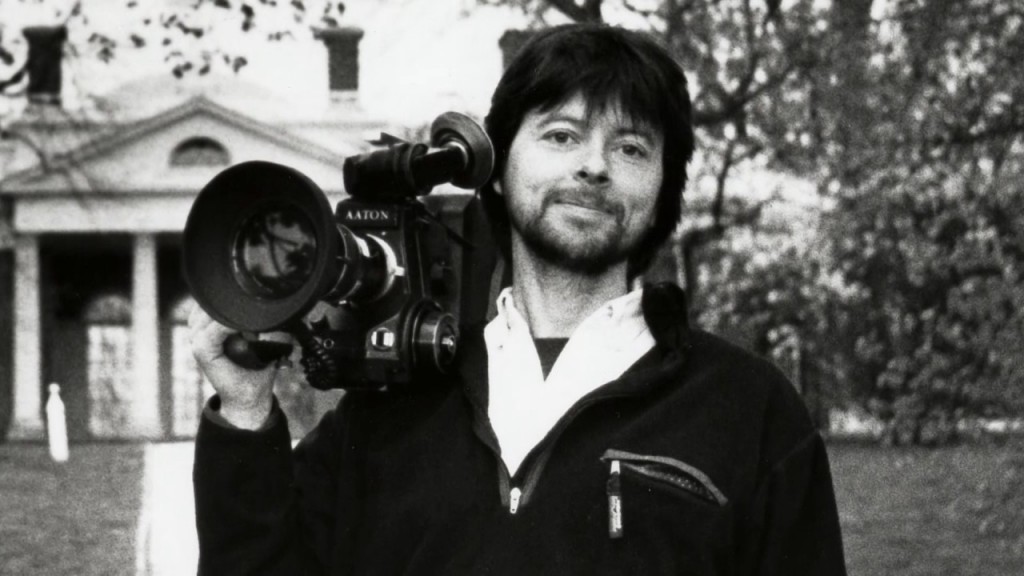Culture
‘Ken Burns: America’s Storyteller’ to Air Saturday On WOUB-TV
By: Emily Votaw
Posted on:
Carolyn Lewis, the former director and general manager of WOUB Center for Public Media, was in Dallas, TX for a Public Broadcasting meeting in 1990 when she first heard of Ken Burns.
“The Civil War was just premiering on PBS and this little, tiny fellow comes walking out on stage to talk about this new series that had no motion other than stills and interviews with historians,” said Carolyn Lewis. “Everybody kind of looked at each other like ‘How is this going to go over? Everything is becoming so fast paced,’ But The Civil War was one of the most impactful series that PBS has ever done.”
This Saturday at 11 a.m., WOUB-TV will broadcast Ken Burns: America’s Storyteller, a documentary about the life and work of Ken Burns (how meta is that?) hosted by Tom Hanks and including interviews with Meryl Streep, George Lucas, Yo-Yo Ma and many others.
Andrea Walla, a lecturer of video production for the Ohio University School of Media Arts and Studies, said that she first started hearing the term “the Ken Burns effect” some 20 years ago.
“When (Ken Burns) was first putting his documentaries on PBS, it was a very mechanical way of doing things; having photos tell your stories and using a slow zoom in and a slow zoom out, it was a really interesting way to showcase historical photos,” said Walla, who explained that “the Ken Burns effect” simply refers to the documentary-maker’s penchant for adding movement to photographs through the editing process.
“When I started editing, it was all linear editing, tape to tape. Once we started using nonlinear editing programs, like Avid and Premier and Final Cut, everyone was able to manipulate photos like Ken Burns did,” said Walla. “That made it easy for everyday editors to use his style, so it became very popular.”
Walla said that she always reminds her students to add “the Ken Burns effect” to the photos that they utilize in their video projects.
“When you’re using photos as a b-roll substitute, it’s important to give some kind of motion to the photos,” said Walla. “Especially if you are working on a historical film that is about a period prior to the invention of film, and all you have to use are still images, like maps or digital renderings of a paintings or a few photographs.”

Frederick Lewis, an associate professor at the Ohio University School of Media Arts and Studies specializing in narrative production, documentary studies and production and scriptwriting, credits Burns work as the catalyst for his career in documentary filmmaking.
“I actually have to credit Ken Burns with getting me excited about doing historical documentaries. Most people became aware of Burns during the broadcast of his nine-part series on The Civil War, but it was two of his earlier projects, one about the building of the Brooklyn Bridge and another on the painter Thomas Hart Benton that changed my career path,” wrote Frederick Lewis in an email to WOUB. “I went on to produce a documentary on the early history of the Boston Marathon and another about artist, adventurer, political activist Rockwell Kent utilizing techniques similar to those employed by Burns.”
Most recently, Frederick Lewis’ documentary Paul Laurence Dunbar: Beyond the Mask, which is being broadcast on PBS stations around the country, utilizes historical photos from more than 80 collections and archives.
“He wasn’t the first to employ extensive camera movement—panning and zooming — over archival photos, but that technique is so completely associated with him now that Steve Jobs got permission from Burns to use the term “Ken Burns Effect” when creating Apple’s editing software,” wrote Frederick Lewis. “His work is so ubiquitous, it has inspired several New Yorker cartoons and there are some pretty funny spoofs and parodies on YouTube. But Ken Burns and his production team have been beyond prolific when it comes to connecting the dots of American history. Their output is staggering, and he deserves a great deal of credit for popularizing the historical documentary.”
Carolyn Lewis said that a number of years ago she was at a meeting for Ohio Broadcasters in Columbus, and that a young colleague from WOUB had joined her for the meeting.
“Ken Burns was in Columbus for a meeting with another group, and I saw him and I said ‘Hi Ken!’ and he said ‘Hi Carolyn!’ The young man who was with me was absolutely floored that Ken Burns remembered who I was. But that’s the mark of a truly good person, someone who remembers you like that,” said Carolyn Lewis. “Burns’ work is important because it teaches us, inspires us and tells us things that we really hadn’t thought about. He’s a brilliant storyteller and his work is so important because it tells us stories that we need to hear in a way that we need to hear them and see them.”

